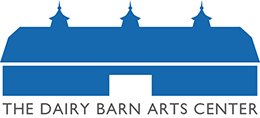MATERIALS LIST
- BOOK TO ALTER
While you will need to find at least one book to alter. Having more than one book can be helpful if you are waiting for things to dry or want to work in different scales and themes. These instructions will help you pick a book to alter:
- Picking a theme or subject matter you would like to explore is not necessary but it is a great place to start. The book/s you chose, even if it is just the title, can be the inspiration for what you make so select something that appeals to you.
- Pick a book with a sewn spine. Glued spines will fall apart while you work on them.
How to identify a sewn spine:
- Check to make sure that the spine, where the pages are joined, is not attached to the cover and a gap forms when the cover is pulled away at the spine
- Next identify the signatures of the book. Signatures are printed sets of pages, that are usually equal in number, that once folded and grouped are sewn together at their center fold.
- When you open to the center of a signature you will see the sewn thread that run the length of the fold.
- Make sure that the spine is not broken. You can test this by folding the book backwards cover to cover, making sure you don’t hear a crack or a pop. Reference books are built for frequent use so they make good choices.
- If pages are too thin they can be glued together for a better work surface but make sure that the pages are not brittle with age
- Don’t pick a book that is musty or moldy
- Decided if you want a book that has more images or more text. Maybe you want one of each
- Consider the size and thickness, number of pages, of the book/s that you want to work with. You will remove about half of pages and glue some together in the process of making your book.
Looking for a good place in Athens to find a book to alter?
- Thrift Stores – UpCycle Ohio has a ton of options and New-To-You has free books
- Public Library – There is a free book section and they also have free magazines to use as collage materials
- Your own bookshelf – Do you already own a suitable book that you no longer read
- COLLAGE MATERIAL
This is a really broad area of your supply list and you will most likely continue to collect elements throughout the course. Your chosen theme, a color scheme or an artistic style can help guide or narrow your search. The more the better, you can always share and trade with others in the course.
Your book will not be acid-free. Because of this, different from scrapbooking, your materials do not need to be acid-free.
Use what you have. While you can purchase collage material, it is not necessary to spend a ton or any money on them. Think of ephemera, printed material that is not valuable and is not meant to be preserved. Basically, any piece of flat, clean, material meant to be disposed of after use: Magazines, Newspaper, Mail, Receipts, Wrapping paper, Foil, Paint Chips, Tape, Fabric Scraps, etc.
Your Material Fee will provide:
- Set of 4 Paint Brushes
- Acrylic Paint Set
- Plastic Palette with Cover
- Rubber Cement with Brush Applicator
The Dairy Barn will provide access to:
- Scissors
- X-acto Knives
- Rulers
- Embroidery Needles
- Embroidery Floss
- Gesso
- Rubber Cement Refills
- Colored Pencils
- 2B Drawing Pencils
- Erasers
- Oil Pastels
- Chalk Pastels
- One Hair Dryer
If you choose, you may supplement any of these tools or materials with your own preferences. Is there a particular brand of colored pencils you like to use? Would you like to work with water color or gouache in addition to acrylic paint? Is there a particular color of embroidery floss you want to work with? Do you have a rubber stamp collection you want to utilize? Would you want to bring in your own hair dryer to speed along drying processes?
